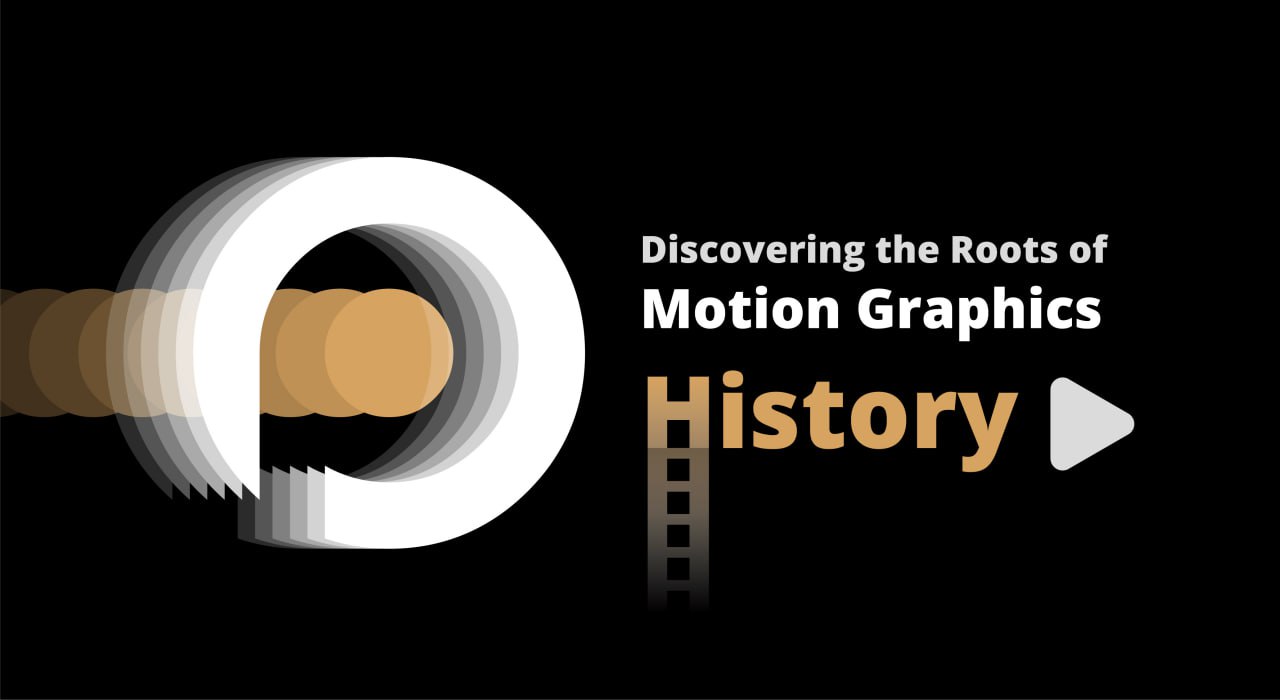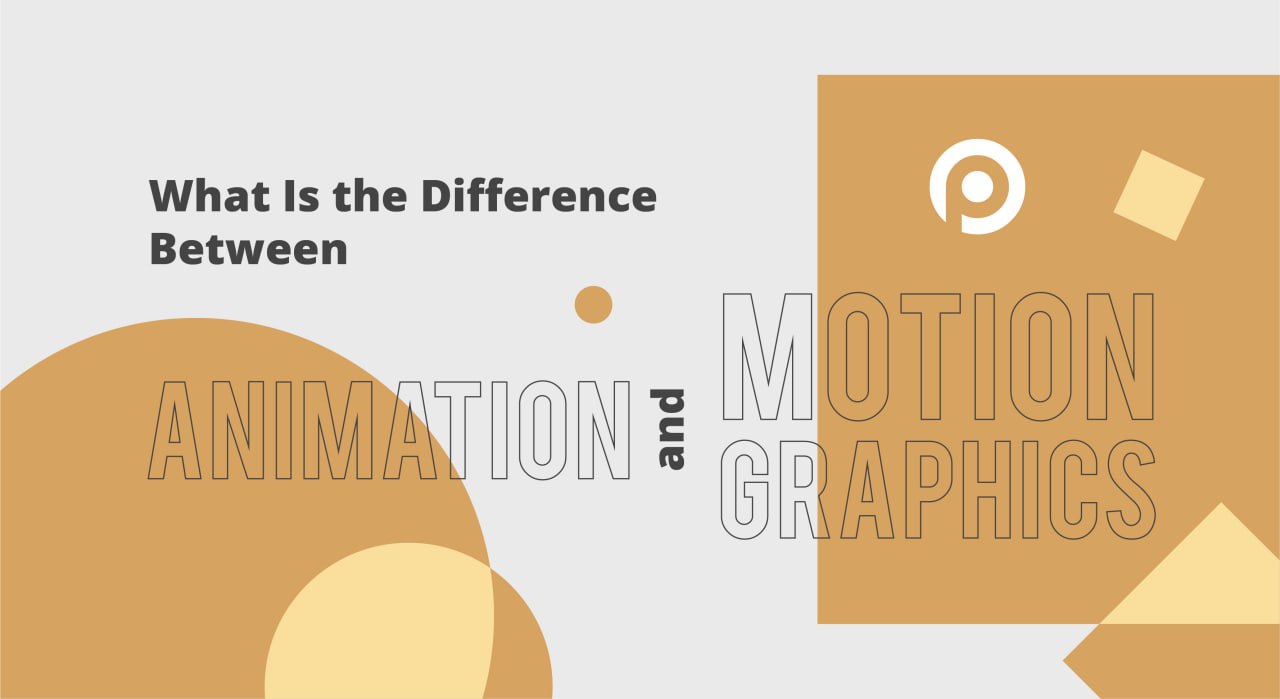Discovering the Roots of Motion Graphics History

Motions Do More
Motion graphics are a basic part of the media industry today and it’s been used in everything from film and television to advertising, gaming, and web design. But how did the motion graphic history grow and become an essential part of our digital life? There are many key influences, technologies, and trends that have shaped the development of motion graphics over the years, and give the graphic artist the possibility to create beautiful, innovative, and captivating motion graphics. In this article, we will explore full information about motion graphics history, from the earliest forms, with examples of motion graphic history, and the development of this ever-evolving art.
The Motion Graphics Definition:
Motion graphics are part of the graphic design industry, that are used to create visual designs that incorporate motion, such as animation, video, and other types of dynamic visual effects. Motion graphics can be part of any creative process including titles, logos, and all the elements of brand identity. The motion graphic history showed that it is an effective way to deliver your ideas and information quickly, and can be used to create a variety of engaging visuals, whether we are talking about commercials, digital art, or video games.
10 Popular Types of Motion Graphics:
Before going on to talk more about the motion graphics history, let us tell you about the most popular types of motion graphics:
- 2D Motion Graphics.
- 3D Motion Graphics.
- Kinetic Typography.
- Infographics.
- Stop Motion Animation.
- Whiteboard Animation.
- Data Visualization.
- VFX and Compositing.
- Logo Animation.
- Character Animation.
What Are the Motion Graphics Main Uses?
Throughout motion graphics history, there have been many uses that developed through the years till the forms we are seeing nowadays. Motion graphics are used for a wide range of applications and creativity, including:
- Illumination of complex topics through visually engaging animations.
- Creating titles, intros, and outros for branding and dynamic videos.
- Advertising campaigns through social media campaigns, Google Ads, and any other digital campaign.
- Creating engaging advertisements or promos for big and small businesses.
- Generating dynamic data visualizations.
- Designing unique logo
- Creating interactive infographics, which helps introduce big information most easily.
- Producing 2D animations for explainer videos.
- Generating dynamic typography for motion graphics videos.
The History of Motion Graphics:
Motion graphics history goes back for many decades and has evolved over time, however, the concept of motion graphics refers to the process of combining text, images, sound, and video to create a motion picture or animation is still the same.
Who Is the Father of Motion Graphics?
The father of motion graphics is believed to be John Whitney, an American graphic designer, and animator who was the first one to develop the concept of motion graphics as we know it now. However, before creating motion graphics, John Whitney was a self-taught musician, filmmaker, and graphic designer. Which helped him to develop his idea of motion graphics by combining the elements of music, film, and art.
Where Did Motion Graphics Start?
Motion graphics history says that it originated in the USA and was first used for commercials and movie trailers. The most popular tools used to create motion graphics were Adobe After Effects and Adobe Photoshop.
What Was the First Ever Motion Graphic?
The first ever created motion graphic was a 30 seconds long motion video for Bell & Howell commercial in 1965, moreover, it made a lot of great positive commercial vibes for that brand.
What Are the Components of Motion Graphics?
The components of motion graphics include colors, images, sound, and text, as these components help you to create an emotional connection with the audience, and tell your story, with the required information listed within the right mood for your brand’s digital marketing effectiveness measurements.
What Is the Future of Motion Graphics?
Motion graphics are now used in advertising, film, music videos, education, and so many other fields, thus, the future of motion graphics is very promising. With great growth indicators as motion graphic is getting more and more popular in the visual community, furthermore, more companies are using motion graphics to communicate with their audience.

What Is the Difference Between Animation and Motion Graphics?
Animation: Animation is the process of creating a series of still images that when viewed one after the other creates the illusion of movement. Animation can be made for both traditional and digital media and can be used to create characters and environments, moreover, tell stories.
Motion Graphics: Motion graphics are designs that are brought to life through motion, often created in a digital environment and used for entertainment, advertising, or instructional purposes. Motion graphics history creation can range from simple animated text to complex 3D animations with multiple elements, and are often used to convey ideas or stories visually, with a more engaging experience than traditional static images.
Thus, we can say that the main difference between animation and motion graphics is that animation is a series of images that are played back in rapid sequence, while motion graphics are the combination of graphics, text, animation, and sound to create a video.
3 Successful Examples of Motion Graphics:
After talking about motion graphics history, it is time to talk about some of the most powerful motion graphics examples:
1. The New York Times Climate Video Series:
A series of short educational videos that was created by The New York Times’s in-house video team and directed by animator Beomsik Shimbe Shim. The series used motion graphics to explain complex topics like global warming, renewable energy, climate change, and the Paris climate agreement in an easily digestible and entertaining way. The result was an award-winning series that has been viewed millions of times and has received praise from industry experts.
2. The “Safety is No Accident” Campaign for AIG:
This campaign was created to help AIG inform its customers about the importance of safety in the workplace and was designed by the animation and motion graphics team at Gravillis Inc. Through vibrant colors and humorous illustrations, the campaign aimed to engage viewers with its message and to encourage them to take the necessary steps to ensure their own safety. The result was a winning marketing campaign that delivered the required message to AIG’s customers.
3. The “The Science Behind It” Campaign for Microsoft:
With a goal to demonstrate the scientific principles behind some of the products Microsoft produces, this motion graphics campaign was created by the motion graphics team at Microsoft. The campaigns provided viewers with a look at how their products were designed and developed to clarify the depth of Microsoft’s engineering capabilities. The result was a successful campaign that raised awareness of the science behind Microsoft’s products.
The bottom line,
Motion graphic history goes back for many years to count, however, it is still going with great growth indicators and possibilities for now and the future. Thus, contact us to include creative motion graphics work in your digital marketing strategy.


Comments are closed.